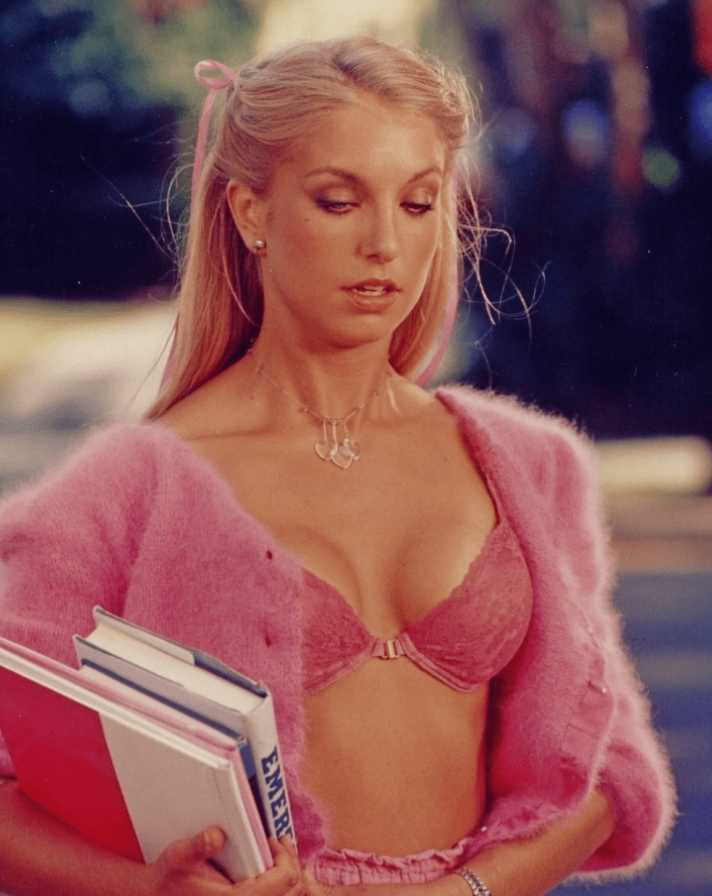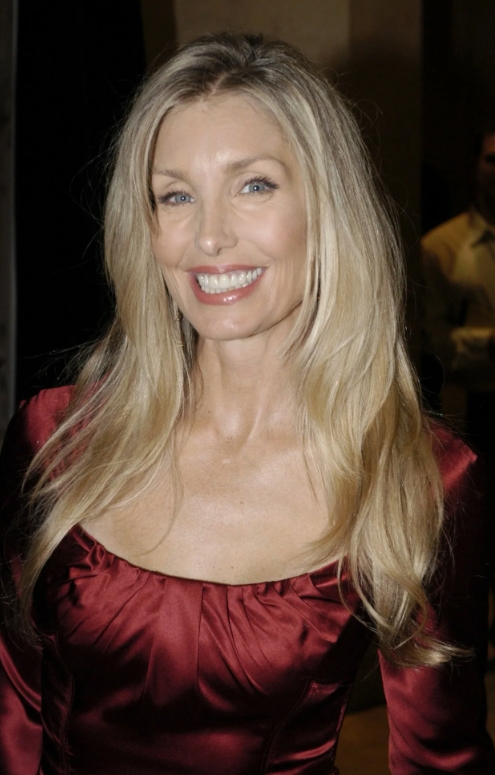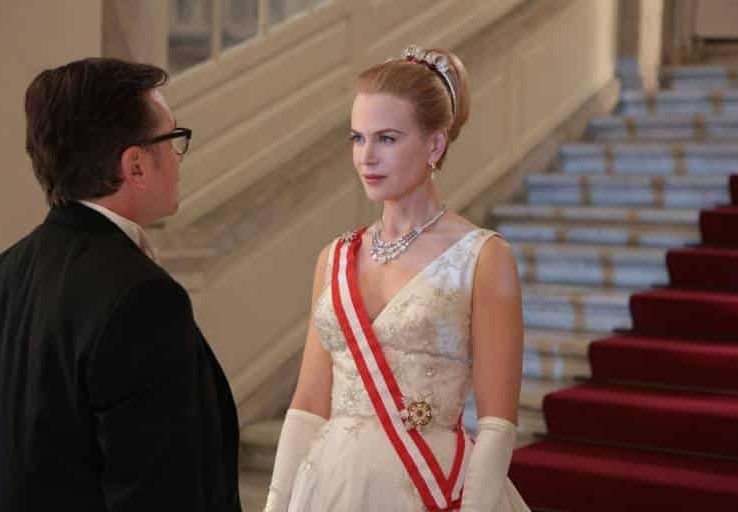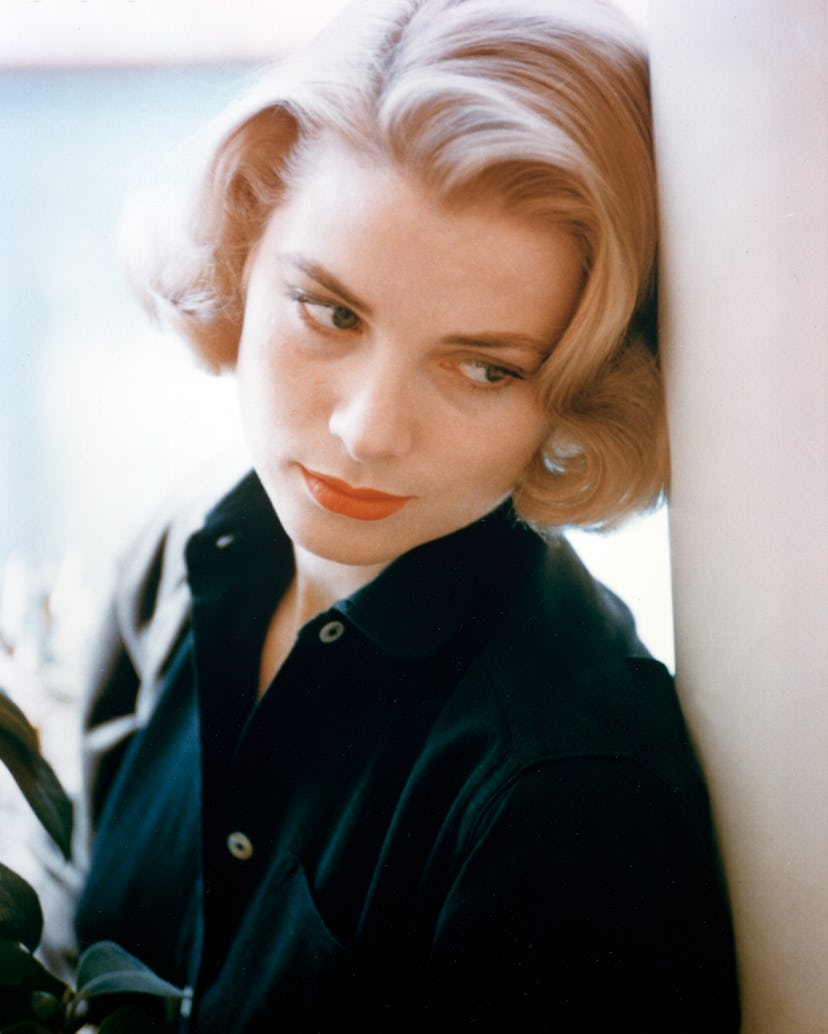80’s Hollywood Icon With Undeniable Talent And Charm: Can You Guess Who She Is?
Heather Thomas’s name will forever be linked to the glamour and excitement of 1980s television, but her true story reaches far beyond the bright lights of Hollywood. Once one of America’s most recognizable faces thanks to her breakout role as Jody Banks in

Born on September 8, 1957, in Greenwich, Connecticut, Heather Thomas displayed creativity and confidence from an early age. After moving to California, she attended UCLA’s prestigious School of Theater, Film, and Television, where she immersed herself in storytelling and performance. Her dedication quickly paid off. Shortly after graduating, she landed her breakout role as Jody Banks in
Thomas’s portrayal of Jody — a fearless stuntwoman with equal parts wit, beauty, and toughness — resonated with audiences across the country. At a time when television still offered few strong, independent female characters, Jody Banks stood out. She wasn’t just the sidekick or the damsel in distress; she was capable, confident, and clever. Viewers loved her mix of athleticism and charm, and she quickly became a pop culture favorite.

As the show’s popularity grew, so did Thomas’s fame. She graced countless magazine covers and posters, her radiant smile and athletic physique making her one of the defining symbols of 1980s television glamour. But behind the public success, fame came with intense pressure and, at times, danger. Her growing celebrity status led to unwanted attention, including troubling security threats that deeply affected her sense of safety and privacy.
By the mid-1980s, Thomas realized she needed to step away from the spotlight. The decision wasn’t easy — she had built a successful career that many could only dream of — but it was necessary. In interviews years later, she would describe that period as a time of self-reflection and healing. “Hollywood gives you everything you think you want,” she once said, “but sometimes, you have to step away to find what you truly need.”

That search for meaning led her down a new path. Away from the cameras, Heather Thomas found her voice as a writer and a passionate advocate for change. Her creativity never disappeared; it simply transformed. She began writing screenplays and eventually novels, using her storytelling ability to explore complex themes of identity, empowerment, and social responsibility.
But writing was only one part of her transformation. Thomas also became deeply engaged in activism, dedicating herself to political and humanitarian causes. Alongside her husband, Skip Brittenham — one of Hollywood’s most respected entertainment lawyers — she co-founded

Over the years, Thomas and Brittenham emerged as key figures in the world of Democratic fundraising. Their Los Angeles home became a meeting place for some of the most influential voices in American politics. From supporting Barack Obama’s presidential campaigns to hosting events for current leaders, Thomas has consistently used her platform and resources to advocate for justice, equality, and democracy.
Her activism isn’t performative; it’s personal. Thomas has been especially vocal about protecting voting rights and ensuring fair elections. She has worked closely with grassroots organizations like Stacey Abrams’s Fair Fight

Thomas’s advocacy also extends beyond politics. She has long championed issues related to education, healthcare, and women’s empowerment. Through her philanthropic work, she has supported nonprofits that focus on improving access to education, mental health awareness, and support for survivors of abuse. Her efforts reveal a woman guided not by ego, but by empathy — someone who sees her influence as a tool for service, not status.
Even as she’s built this second act of her life, Heather Thomas has never completely turned her back on Hollywood. She remains respected within the entertainment industry, admired not only for her early career but also for the grace with which she transitioned out of it. Occasionally, she reappears for interviews, retrospectives, and fan events, her warmth and humor reminding fans why they adored her in the first place. But her focus now lies on impact, not image.

At 67, Heather Thomas remains radiant, not just in appearance but in spirit. Time has not dimmed her beauty — it has deepened it, reshaping it into something far more meaningful. Her strength comes from authenticity, from a refusal to conform to the industry’s narrow definitions of success or aging. Instead of chasing relevance, she built her own kind — one rooted in purpose and compassion.
Her journey offers a lesson in resilience and reinvention. She could have been remembered solely as a stunning 1980s television icon, frozen in the nostalgia of that decade. Instead, she evolved — proving that a person’s story doesn’t end when the credits roll.
Heather Thomas’s life today stands as a testament to the power of transformation. She walked away from fame at its height, faced personal challenges, and returned stronger, more focused, and more impactful than ever before. Her work in politics and philanthropy reflects a belief that influence is not about spotlight or celebrity — it’s about what you do with the platform you’ve been given.

From Hollywood stunts to humanitarian causes, Heather Thomas’s evolution embodies both courage and grace. She has turned fame into fuel for change, glamour into generosity, and recognition into responsibility.
Her legacy is no longer just about The Fall Guy or her status as an 80s icon — it’s about leadership, activism, and the quiet power of a woman who dared to redefine herself on her own terms. In doing so, Heather Thomas has proven that true beauty, like true success, comes not from how brightly you shine, but from how many others you help light the way.
To the world, she was elegance incarnate—cool, composed, flawless. But behind palace doors, Grace Kelly was writing a very different story, one no camera ever caught

Grace Kelly was never simply beautiful—she was definitive. Her face, with its porcelain complexion, piercing blue eyes, and golden waves, seemed sculpted for the golden age of Hollywood. But what made her unforgettable wasn’t just how she looked. It was the stillness, the quiet confidence, the aura of effortless refinement she carried in every frame and every room. Long before she wore a crown, she was already royalty in the eyes of audiences around the world.
Born in Philadelphia in 1929 into a wealthy Irish-American family, Grace Patricia Kelly grew up in a household of ambition and achievement. Her father, John B. Kelly Sr., was a three-time Olympic gold medalist in rowing, while her mother had been a model and taught physical education. Grace’s upbringing was privileged, but it was also competitive—her family prized accomplishment and excellence. This environment shaped her resilience, even as she pursued a career that seemed, at the time, frivolous to her father: acting.

When she left for New York City to study at the American Academy of Dramatic Arts, she carried herself with the same poise that would one day mesmerize millions. She began on the stage and in television, working tirelessly and earning respect for her discipline. Modeling paid her rent, while live TV dramas gave her practice in front of the camera. By the early 1950s, she had broken into film, and almost immediately, Hollywood recognized something different about her.
Her rise was meteoric. In 1952, she landed a small but striking role opposite Gary Cooper in High Noon. She was young, fresh, and understated—yet impossible to forget. The performance caught the attention of directors, including Alfred Hitchcock, who would soon become both her mentor and greatest admirer. Hitchcock was fascinated by her duality: the cool exterior of a refined blonde masking a hidden intensity. He cast her in three of his most elegant thrillers: Dial M for Murder, Rear Window, and To Catch a Thief.
In Rear Window especially, she became an archetype: gliding into James Stewart’s apartment in couture gowns, she embodied sophistication, but she also revealed warmth, wit, and bravery. Kelly’s acting was never loud, never desperate for attention. Instead, she leaned into restraint, letting subtle emotion and natural presence do the work. Whether playing a socialite, a wife under suspicion, or a jewel thief’s companion, she was composed but never cold—she let warmth slip through the cracks of her ice-queen exterior.

Her talent did not go unnoticed. In 1954, she starred in The Country Girl, a role that challenged her glamour and asked for rawness. Stripped of the elegance audiences had come to expect, she portrayed the weary wife of an alcoholic singer, played by Bing Crosby. It was a performance of nuance and grit, and it won her the Academy Award for Best Actress. She was only twenty-four, and she had already achieved the kind of recognition most actors only dream of.
At the peak of her fame, Kelly was everywhere: on magazine covers, at premieres, in the hearts of fans across the world. Yet even as her career reached dazzling heights, she remained measured, selective with her roles, unwilling to overexpose herself. This restraint added to her mystique.
Then, in 1956, she stunned Hollywood by leaving it all behind. She married Prince Rainier III of Monaco, retiring from acting to become Her Serene Highness Princess Grace of Monaco. The wedding was a global event, broadcast to millions, the stuff of fairytales. Yet Grace herself never thought of it as abandoning her career for a man. She saw it as stepping into a different stage—one where her performance was not scripted, but lived.

Life as a princess was not without challenges. The adjustment from Hollywood sets to the rigid protocols of palace life was difficult. She missed acting, and Hollywood missed her. Hitchcock even tried to lure her back to film, but palace duties, motherhood, and diplomatic responsibilities came first. She embraced her role with seriousness, becoming a cultural bridge between old-world royalty and modern celebrity. Her grace wasn’t a façade—it was her way of shaping a new identity while staying true to herself.
Even outside of Hollywood, she remained an icon. Her style—minimal, chic, and regal—continued to influence fashion for decades. The Hermès handbag she carried to shield herself from paparazzi became known as the “Kelly bag.” Designers looked to her for inspiration, and women emulated her understated elegance. Beyond fashion, she dedicated herself to charitable work, focusing on children’s welfare, the arts, and humanitarian causes. In doing so, she redefined what it meant to age with dignity and purpose in the public eye.

Grace Kelly’s story ended tragically in 1982. While driving back to Monaco from her country home, she suffered a stroke, lost control of the car, and died at the age of fifty-two. The accident shocked the world, plunging Monaco and Hollywood alike into mourning. She was laid to rest in the cathedral of Monaco, mourned by royalty, film stars, and ordinary admirers who had adored her from afar.
Yet her legacy endures—not just as the actress who became a princess, but as a woman who embodied elegance without excess, power without noise, and beauty without compromise. For many, she remains the ultimate symbol of grace itself—not merely because of her name, but because of the way she lived.
Decades after her passing, her films continue to enchant new generations. Her influence in fashion remains alive, referenced in collections, photography, and even everyday street style. Her image still graces posters, documentaries, and exhibitions. But perhaps her most lasting contribution is the way she showed the world that strength can be quiet, dignity can be powerful, and beauty can be more than appearance. Grace Kelly didn’t just play grace on screen—she lived it, fully and without apology, leaving behind a legacy that feels eternal.




